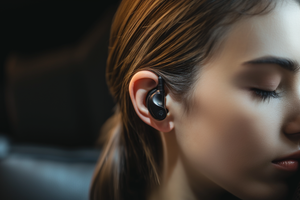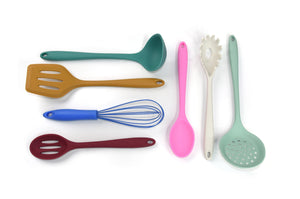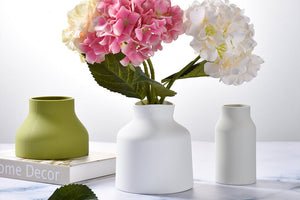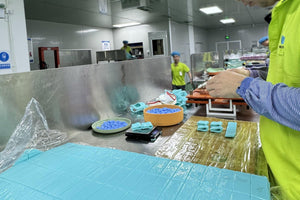When developing a new product, creating a prototype is an essential step in the product development process. A prototype serves as a tangible representation of your concept, allowing you to refine the design and test functionality before committing to large-scale production. Whether you're a startup founder or an established brand, having a well-designed prototype can save time and money, helping you avoid costly mistakes during production. Here’s a step-by-step guide on how to create an effective product prototype, with a special focus on silicone products.
1. Clarify Your Product Concept
Before diving into prototyping, make sure your product concept is well-defined. Understanding the product’s purpose and its key features will help guide the design and manufacturing process. Begin by answering these key questions:
- Problem: What issue does your product solve?
- Target Audience: Who is your product for, and what are their specific needs?
- Functionality: What features does your product require to be effective and user-friendly?
By answering these questions, you create a strong foundation that will guide the development of your prototype.
2. Sketch Your Design
Start by visualizing your product. Whether you’re sketching by hand or using CAD (Computer-Aided Design) software, creating a rough draft of your product is crucial for communicating your idea clearly. Be sure to include all necessary dimensions, components, and possible variations to help ensure that the design matches your intended functionality. A well-detailed sketch will give your design team or manufacturer a better understanding of your vision.
3. Choose Your Prototyping Method
Depending on the complexity of your product, there are different methods you can use to create a prototype. For many types of products, including those made from silicone, the most popular methods are:
- 3D Printing: Ideal for quick iterations and concept validation. It’s relatively inexpensive and allows for complex geometries.
- CNC Machining: Suitable for precise parts and products that require durable prototypes. Often used in industries such as automotive or electronics.
- Casting: For products requiring specific materials, such as silicone, casting can offer a more accurate representation of the final product.
Each method has its pros and cons, so choosing the right one depends on the specific needs of your product and budget.
4. Test and Iterate
Once your prototype is created, it’s time to test it in real-world conditions. This testing phase is crucial to identify any flaws in functionality or design. Depending on your product, you may need to test factors such as:
- Durability: Will it withstand everyday use?
- Ergonomics: Is it comfortable and easy to use?
- Aesthetic Appeal: Does the product look visually appealing and match your brand identity?
Feedback from users and stakeholders can be invaluable during this phase. It may require several rounds of testing and refinement to perfect your prototype.
5. Refine and Finalize the Design
Once you’ve tested the prototype and gathered feedback, it’s time to make necessary adjustments. The iterative process of refining your design ensures that the final product meets both functional and aesthetic requirements. Consider revisiting the design based on testing results and suggestions, whether it’s tweaking a feature or adjusting the materials.
Wolife Prototype and Full-Scale Manufacturing: Tips for Creating a Silicone Product Prototype
When it comes to silicone products, the prototyping process can be more nuanced due to the unique properties of silicone as a material. As a manufacturer, Wolife provides valuable insights into creating successful silicone prototypes and scaling up to full-scale production.
1. Understand the Properties of Silicone
Silicone is a versatile and durable material used in a variety of products, from baby items to medical devices. However, because it’s highly elastic and has different molding characteristics than plastics or metals, it’s important to understand its behavior when prototyping. Silicone tends to be more flexible and heat-resistant, making it ideal for products that require flexibility or exposure to high temperatures. This should influence both the design and prototyping process.
2. Choose the Right Silicone Compound
Silicone comes in various grades and forms, each with different properties suited for specific applications. Whether you’re designing a soft teething toy or a sturdy kitchen product, understanding the hardness (Shore A) and curing process of silicone is key. Work closely with your prototyping team to select the right silicone compound based on your product’s function and performance requirements.
3. Silicone Molding for Prototypes
For silicone products, creating prototypes often involves molding techniques, such as liquid silicone rubber (LSR) molding or compression molding. These methods allow for precise details and scalability, ensuring that your prototype closely matches the final product.
- 3D Printed Molds: A quick method for producing small batches of silicone products. However, it may not always yield the same precision as traditional silicone molding.
- Silicone Injection Molding: Ideal for creating prototypes with consistent results, perfect for larger-scale production runs.
4. Focus on Detail and Tolerances
Silicone products often have small, intricate details that need to be perfect for both function and safety. This could include soft-touch surfaces, ergonomic curves, or interlocking components. Pay special attention to the tolerances in your design to ensure that the silicone will mold accurately. Working with a manufacturer like Wolife can help ensure that your prototype is produced with the right level of detail and precision.
5. Test for Real-World Usage
For silicone products, real-world testing is critical. Silicone’s flexibility means it may behave differently in actual use compared to the prototype. Whether your product will be exposed to extreme temperatures, moisture, or heavy wear, you’ll need to test its durability and performance in real-world conditions. This ensures that it will perform as expected once it goes to market.
6. Scaling Up to Full-Scale Production
Once the prototype is perfected, the next step is scaling up to full-scale manufacturing. When transitioning from a prototype to mass production, there are several factors to consider:
- Cost Analysis: Ensure that the production method selected is cost-effective and scalable.
- Supply Chain Management: Working with a reliable manufacturer like Wolife ensures that the silicone products are consistently produced to the required specifications.
- Quality Control: Establish a strict quality control process to ensure that every unit produced meets the same high standards as the prototype.
Partnering with a manufacturer with expertise in silicone products, such as Wolife, can smooth the transition from prototype to mass production, ensuring that your product maintains its quality and functionality throughout its lifecycle.
Final Thoughts
Creating a product prototype is an essential part of the product development process, helping you test your ideas, refine your design, and prepare for mass production. By understanding the materials you're working with, using the right prototyping techniques, and continuously iterating based on feedback, you can create a prototype that leads to a successful product launch. Whether you're working with traditional materials or specialized products like silicone, focusing on the details at every step of the process will set your product up for success.
About Author
We are dedicated to pushing the boundaries of possibility in silicone product manufacturing and our extensive range of inhouse designs and molds across baby, pet, homewares and more allows companies to customize and create products specific for their brand and market needs.
Whether you are looking for a company to bring your ideas and brand to life or looking for ready to go items with packaging and branding, WOLIFE is ready to help your business grow.
WOLIFE looks forward to collaborating with you!


 Using LSR in Hearing Components
Using LSR in Hearing Components Why Silicone Cooking Utensils and Baking Trays Don’t Melt – The Science Explained
Why Silicone Cooking Utensils and Baking Trays Don’t Melt – The Science Explained 10 Creative Products You Didn’t Know Could Be Made with Silicone
10 Creative Products You Didn’t Know Could Be Made with Silicone Common Quality Control Challenges in Silicone Manufacturing
Common Quality Control Challenges in Silicone Manufacturing